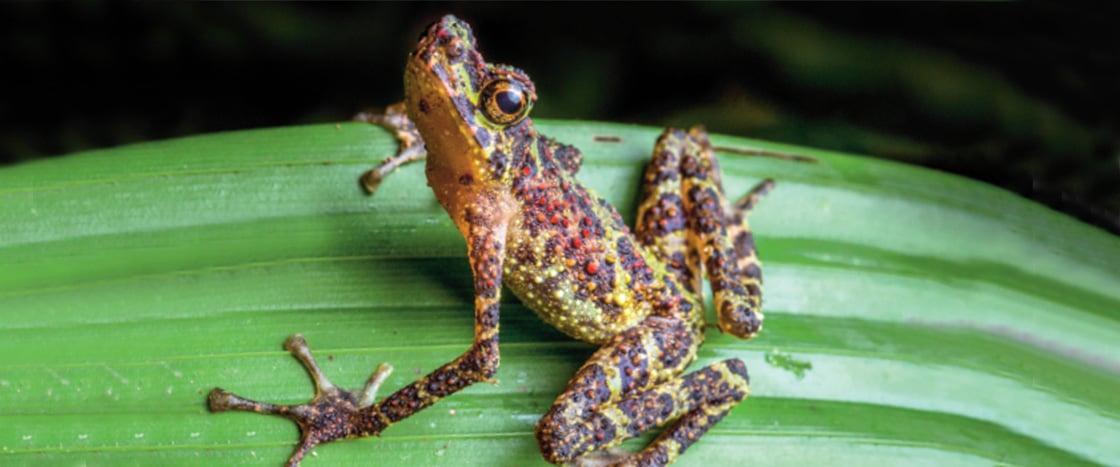When Robin Moore first saw the Bornean rainbow toad, he felt like he was meeting a celebrity. Moore’s team had spent more than 10 months searching the rainforest in Borneo, an island in Asia, before finally finding it. The amphibian hadn’t been spotted in 87 years.
Moore is a conservation biologist at Global Wildlife Conservation (GWC). The organization’s lost species program lists almost 1,200 species that haven’t been seen for decades—or even centuries. GWC provides funding to search for these species. The goal is to discover whether “lost” species are extinct or just very hard to spot.
Moore believes his success with finding the rainbow toad gives people hope. “It’s very easy to feel very overwhelmed by environmental issues and climate change,” he says. “Don’t feel powerless. You can make a difference. Everybody can.”
Robin Moore felt like he was meeting a celebrity. He had seen a Bornean rainbow toad for the first time! Moore’s team searched for more than 10 months to find the toad. The team searched through the rainforest in Borneo. Borneo is an island in Asia. No one had seen a Bornean rainbow toad in 87 years.
Moore is a conservation biologist. He works at Global Wildlife Conservation (GWC). GWC has a lost-species program. The program lists almost 1,200 species that have not been seen for decades. Some species have not been seen for centuries! GWC provides funding to search for these species. The goal is to find out whether “lost” species are extinct or just very hard to find.
Moore found the Bornean rainbow toad. He believes that his success gives people hope. “It’s very easy to feel very overwhelmed by environmental issues and climate change,” he says. “Don’t feel powerless. You can make a difference. Everybody can.”

